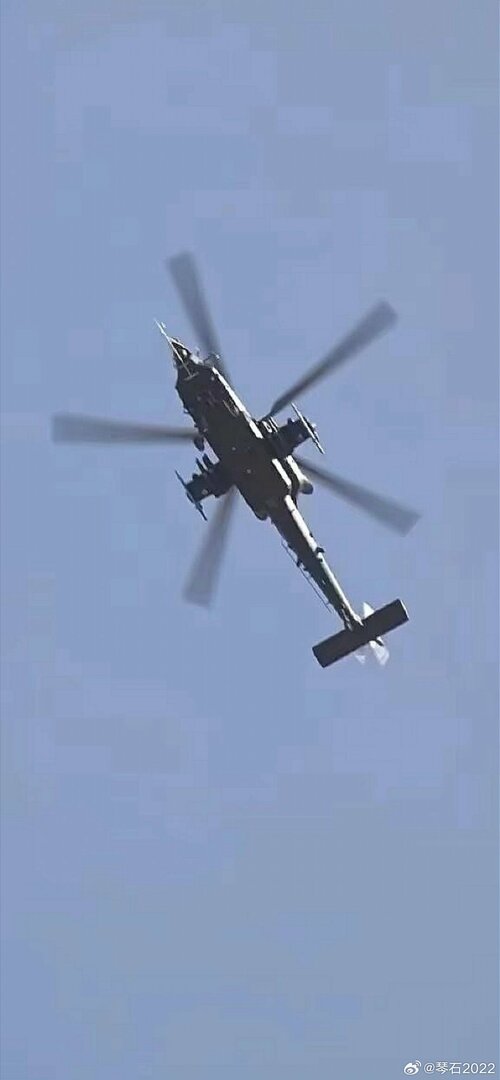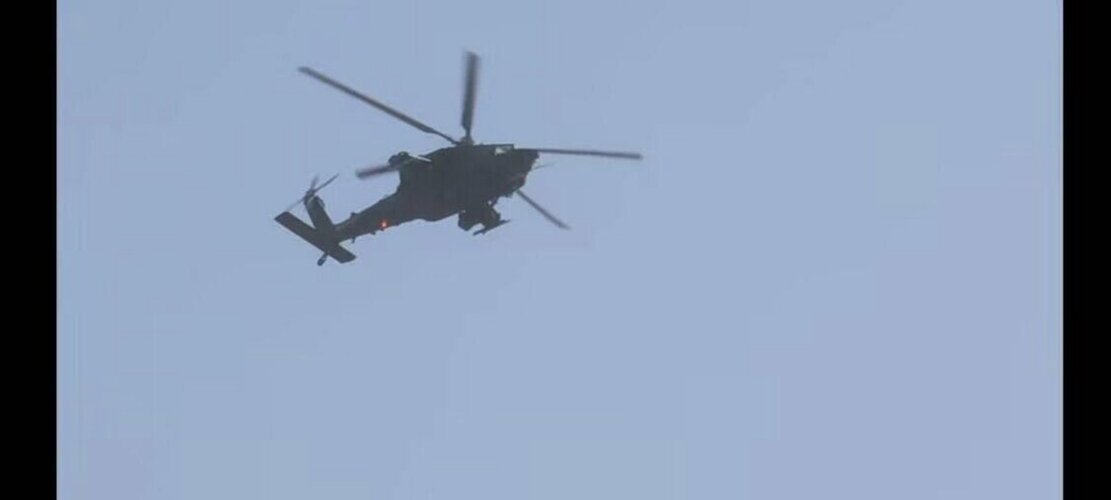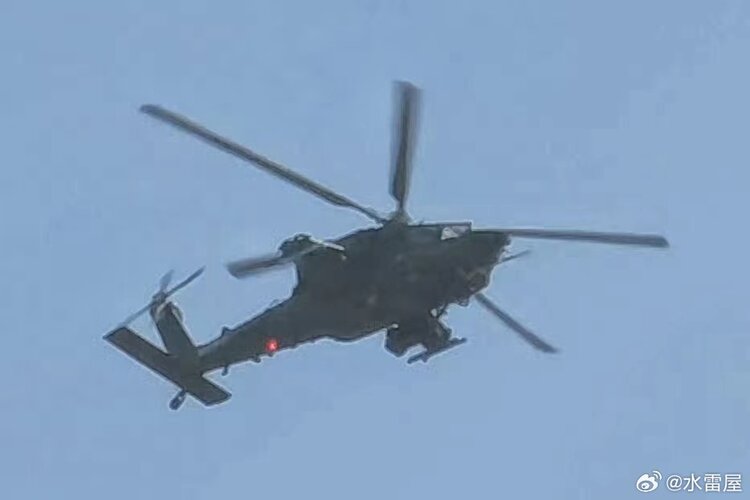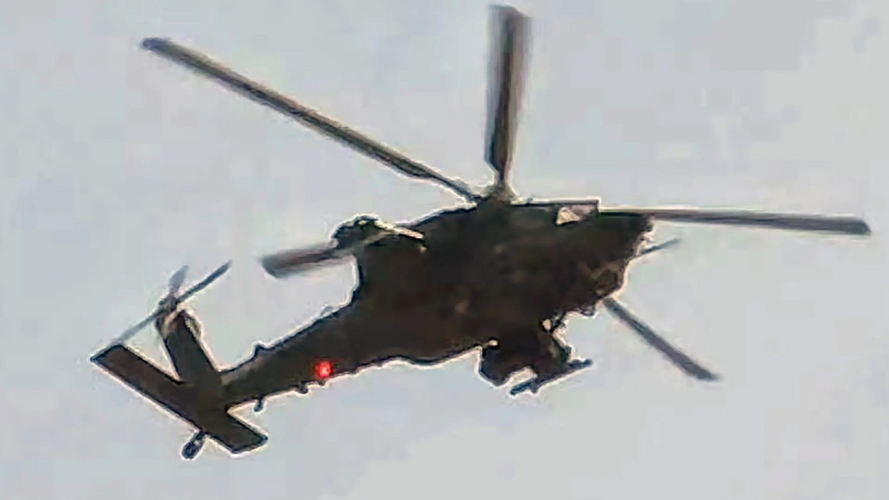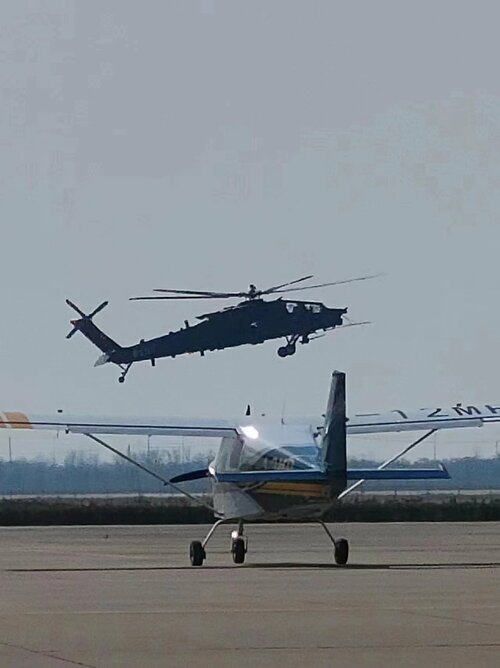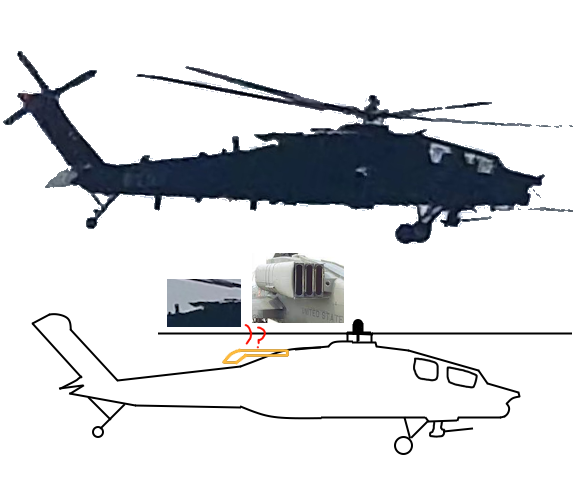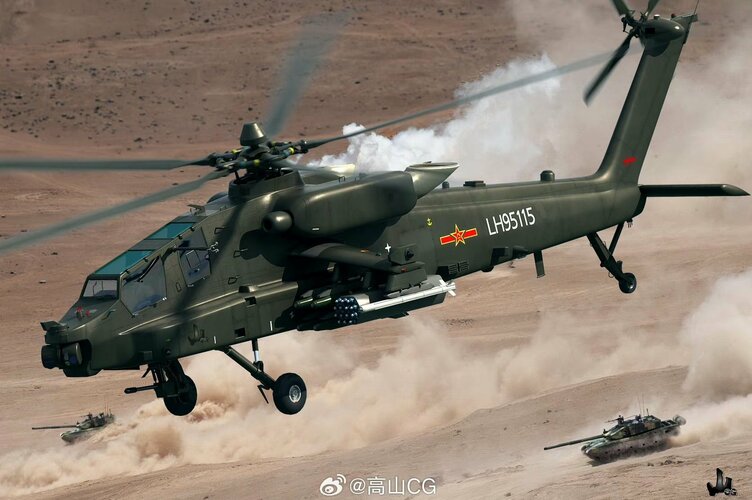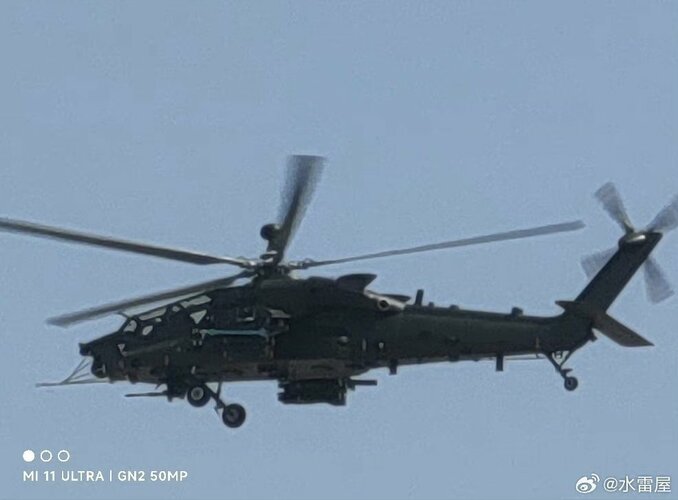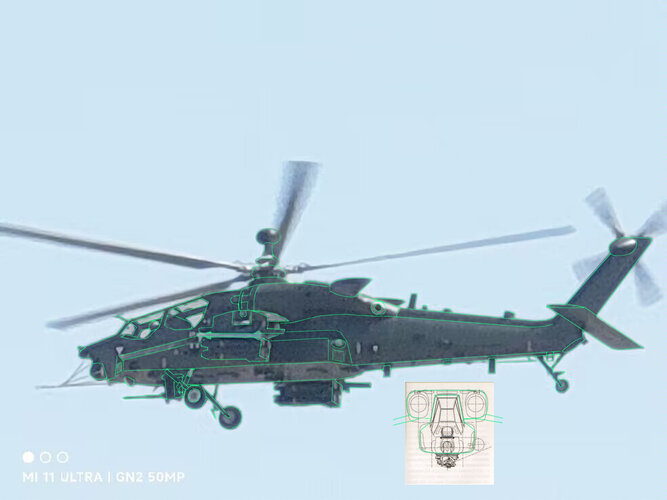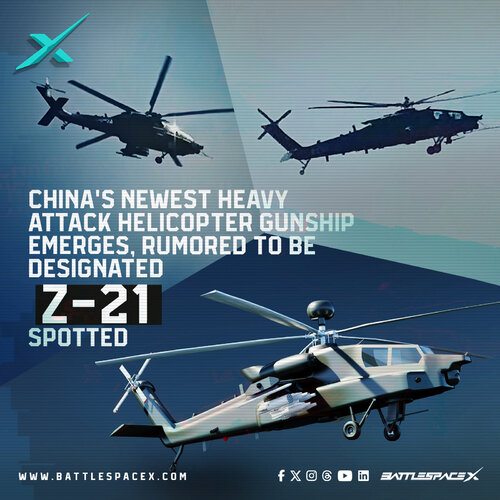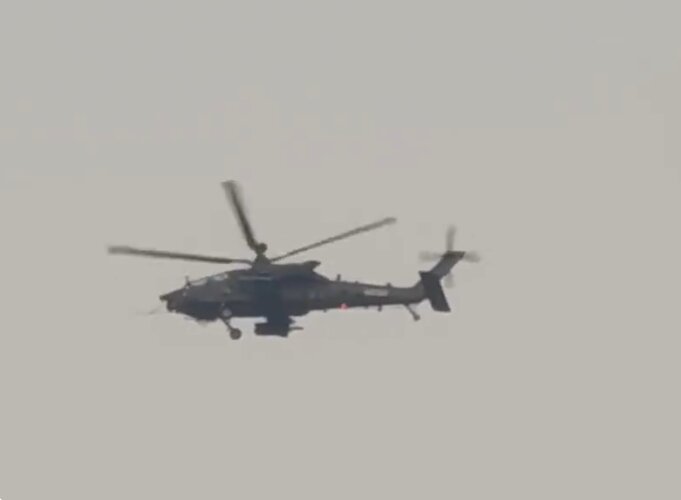I suspect it is a "To be determined" counterweight to ensure that flight testing accounts for the weight on top of the rotor system. I would fully expect China to put some sort of radar sensor in that location for 360 degree search capability. I would also expect the wingtip countermeasure device(s) to increase in size to account for more cooling and space for electronics. Those locations are also good for electromagnetic sensing, giving modern attack helicopters a means to geolocate emitters.
Given the currently speculated size of the rear windows, I will go against most and say that the front seat, given more visibility, is the pilot station. The front seater is closer to the PNVS, so less spatially disoriented. Of course in most attack helicopters either station can be used to fly the aircraft.

